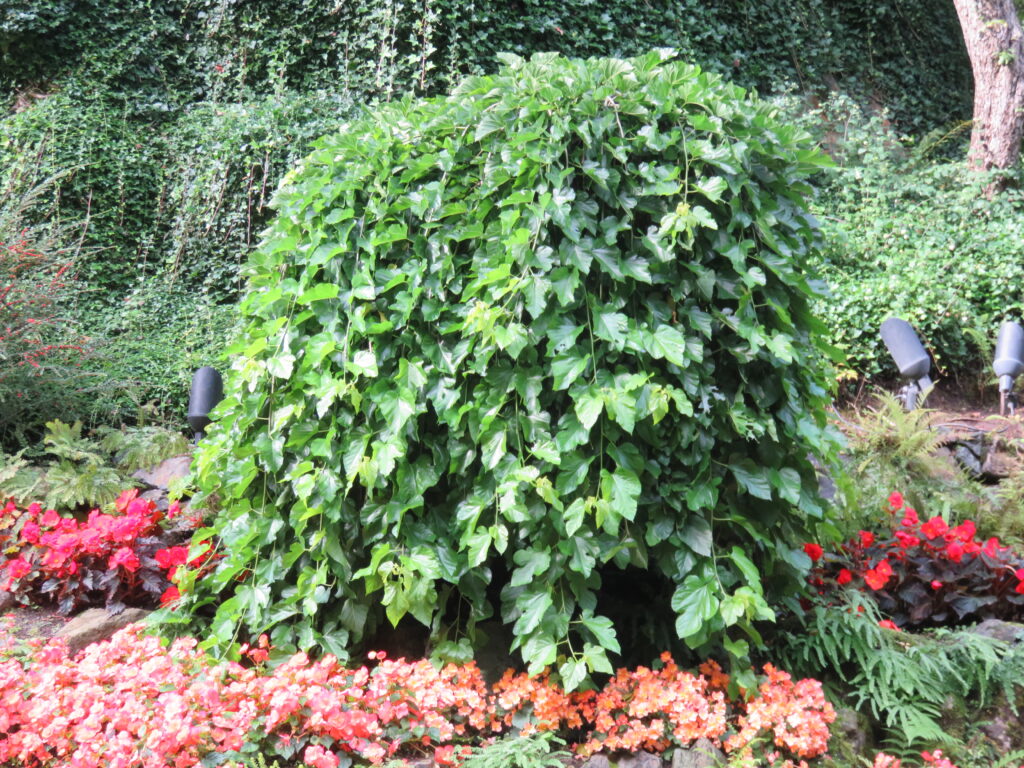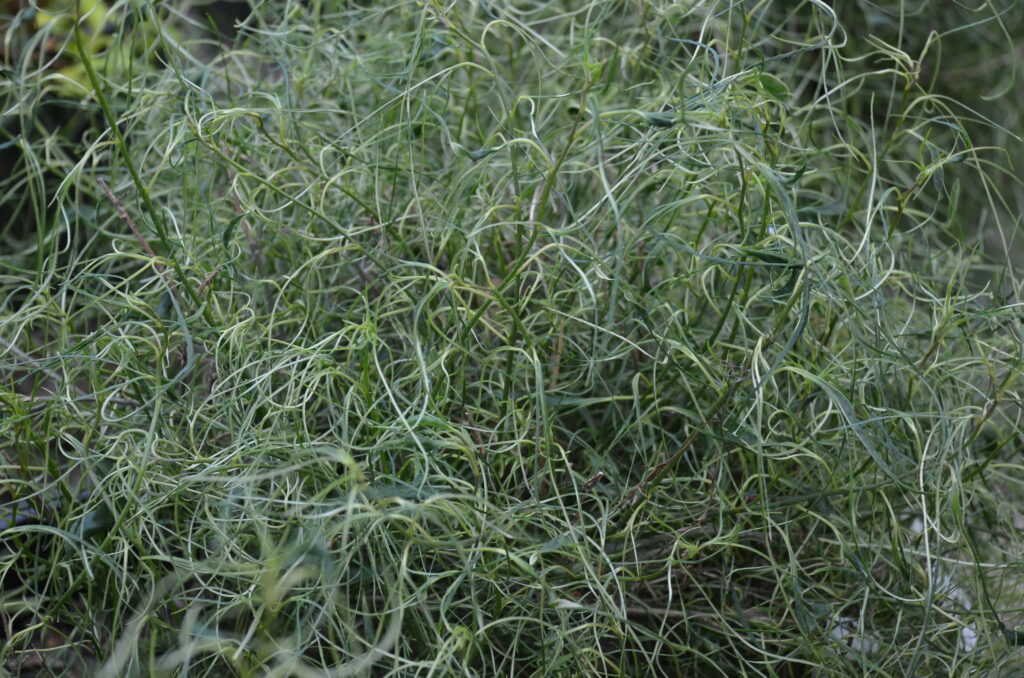
Common (White) mulberry (Morus alba) is a fast-growing, medium sized, deciduous tree that typically grows to 30-50 feet tall and wide. It usually develops a wide-spreading rounded crown with age. This native to China is utilized either as a landscape shade and/or a fruit tree. (USDA hardiness zones 5-9).
White Mulberry prefers a rich, moist, well-drained soil and full sun. The tree tolerates a wide range of environmental conditions including moderate shade, pollution, salt spray, extreme heat, infertile soils, a wide range of soil pH, and moderate drought. It is notoriously shallow rooted.
Mulberries are easy to identify by their large lobed leaves and their edible fruits – a delicious treat as well as a weedy seed problem. Individual leaves may be unlobed, mitten-shaped, or 3-lobed. Mulberry trees are polygamo-dioecious; they produce only male or female flowers on one plant or both flower types are present on the same tree. In June and July, female trees produce an annual crop of white, red, purple or black fruits that resemble long, thin blackberries. Prune mulberry in late fall or winter to avoid sap bleeding in spring.
Mulberries are a popular food source for many species of birds. Unfortunately, the fruit and resulting bird droppings are messy and will stain pavements, automobiles and areas around the home. Weeping cultivars are mostly fruitless which limits its threat as an invasive species.
No serious insect or disease problems trouble mulberries. The tree is not deer resistant. Borers are troublesome in some years in the South. Whiteflies, scale, mites and mealybugs are occasional pests. Bacterial blights and leaf scorch, powdery mildew, and root rot are usually indicators of poor site selection.

Weeping mulberry trees are exceptional unique, trouble-free, and should be planted more. Three major weeping forms are available.
M. alba ‘Pendula’ has a dwarf weeping form that matures to 8-15 feet, sometimes to 20 feet height. It creates a unique and beautiful presence in any garden! Its matchless contorted trunk and branches are revealed from late autumn thru winter.
M. alba ‘Chaparral’ is a superior weeping, male seedless form that grows 8-12 feet tall and is equal width. This male fruitless selection produces yellowish-green catkins in spring.
M. alba ‘Nuclear Blast’ (‘Itoguwa’) is a 3-4 feet tall and wide shrub oddity! Thread-like foliage appears shredded or deformed.

 Posted in
Posted in 
